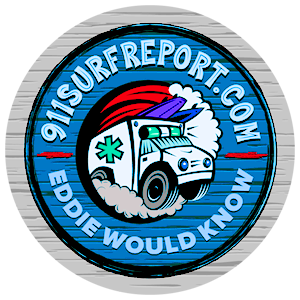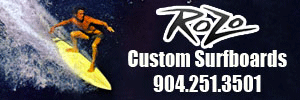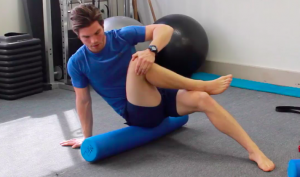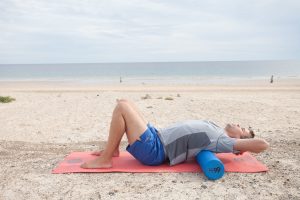Surfing Workout 101: just roll with it
So, you just had a fun sesh, surfed in form, caught more than your share of rides and now are feeling pretty stoked. Nice hot shower, cold beer and time to relax. Then the stiffness sets in, along with some tight spots, probably in your low back, shoulders and maybe in your quads and hamstrings. As they say, time to just roll with it, literally, if you want to maximize and quicken your recovery and be physically fresh manana, for your next sesh.
This short foam rolling tutorial is about developing a routine where you just roll with it on a regular basis. There are various links embedded in the text for more details and instruction. Its cheap, relatively simple, but I promise you will feel it. Here’s what Gershon Borlai, certified fitness coach and lead surf instructor at boostyoursurf.com has to say…
Foam rolling is a great first step in improving your mobility for surfing. Foam rollers are the poor man’s massage therapist, doing soft tissue work for the masses.
As an athlete, you need to get the knots out of your muscle tissue in order to properly stretch and develop joint mobility over time. Now, harder doesn’t necessarily mean better. People seem to be under the impression that the more groaning and self-inflicted pain involved, the more benefit.
Here’s the progression many people take:
“Soft” Foam Roller —> “Hard” Foam Roller —> Rumble Roller (the one with those spikey things) —> PVC Pipe —> Piece of wood on a beach —> Metal pipe
Some people take foam rolling to the next level as if the goal is to win by enduring the most pain. This isn’t necessary.
The major areas that respond well to the foam roller are:
-Glutes
-Hamstrings
-Quads
-Calves
-Back muscles
So, how do you foam roll? Here’s a complete foam rolling routine for surfers that can be done in five minutes. You can also download the below routine as a one-page cheat sheet that will help you to stretch the key areas for surfing at home.
Spend 20 seconds on each tender spot, then move on. You can also adjust how much body weight you use to increase/decrease difficulty (don’t make it too painful for yourself).
Remember that it’s a bit tough to roll on the beach before surfing, so you should ideally do this at your accommodation before you leave.
Glutes roll – hip rotator stretch (20-30 seconds per leg)
Heavy workouts, too much sitting and/or incorrect posture can cause back pain. A little rolling on the upper part of your glutes can release the pain/tension in your lower back.
Glutes roll with crossed legs (20-30 seconds per leg)
This helps to stretch your glutes further after you’ve warmed up. There can be more discomfort where your legs and hips meet with this variation (small-middle gluteal muscle).
Upper back roll (for your thoracic spine, 20-30 seconds per leg)
Your upper back needs to be loose for better turns while surfing. This is the best exercise to help with that.
Quadriceps roll for stretching the front part of your thighs (20-30 seconds per leg)
Sitting too much makes your front quads stiff. This stretch relaxes your quadriceps and helps to stretch the iliopsoas muscles (which act as the strongest flexor of the hip).
Adductor roll (middle thigh roll, 20-30 seconds per leg)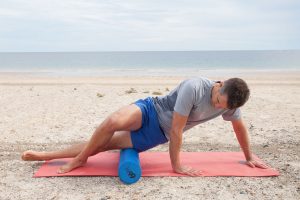
Foam rolling the inner part of your thighs makes it easier to perform deep squats and mobilize your hips. You’ll need this for tighter turns and more control on the board.
Foam rolling can provide great benefits before and after a workout. Rolling prior to a workout can help to decrease muscle density and allow for a better warm up. Rolling after a workout may aid in recovery from strenuous exercise. The nice thing about using the foam roller is that it appears it can be done on a daily basis.
